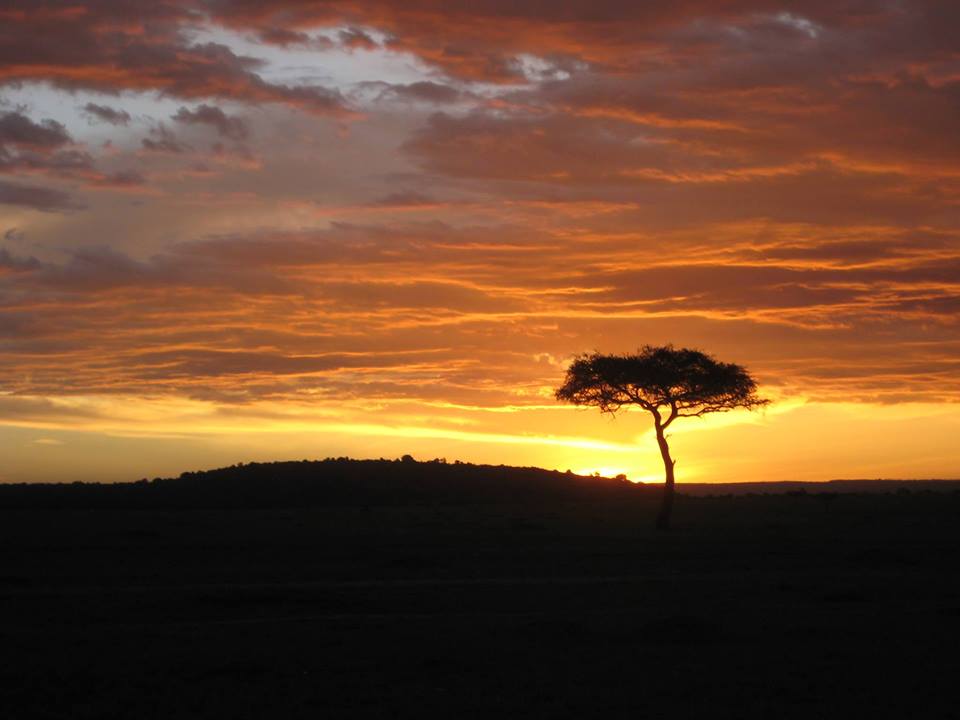Six days that flashed past … but seemed jammed with enough events and experiences to last for weeks.
A first visit to Africa, and to Kenya. A day in Nairobi, one week after the terror attack at Westgate Mall.
Then four days in the astonishing Masai Mara Conservancy, we woke to hippos bellowing in the Mara River, outside our lodgings, and could find, in a couple of hours of driving, most of the animals so closely associated with Africa.
Some thoughts, ahead of the daylong return to Abu Dhabi:
–It is one thing to see giraffes, hippos, lions, et al, in zoos. It is another to see them wandering around doing daily life events with no walls. People are enclosed, here, in motor vehicles; the animals are walking around wherever they want to go.
–I doubt I would ever get used to the concept that living in this part of Kenya means dealing with large and often dangerous (or destructive) animals on a daily basis.
–Returning from a drive into the countryside, we saw a lone man walking along the road, almost at dusk. He is a security guard for another resort, a few miles off. Our guide said: “I would not make that walk. It’s too dangerous.”
–The Kenya Airways Half Marathon was contested in the Masai Mara yesterday, and it did not begin until about 10 a.m. — which seemed several hours too late, for distance runners, because it was a bright and sunny day, with temperatures heading for the high 80s. Why the delay? Because lions live near the course, on broken terrain, and they often feed early in the morning. Preferably not on runners.
–We found Kenyans to be extremely helpful and accommodating. Maybe you expect that when you interact with the service industry, as we did, but people who have lived in Kenya said that is daily life. Friendly, interested people. A Kenya native told us: “Thank you for coming.”
–We are not so sure about the competence of the government. The investigation into the terror attacks seems poorly run, as was the response to the attacks. Kenya remains poorer than it often is perceived by outsiders, ranking in the lower half of international rankings. Nearly 40 percent of Kenyans live in “absolute poverty”.
–Our sense, as outsiders dropping in, is that wildlife in this region is holding on fairly well. Hunting is illegal, in Kenya, and the government and its park rangers are making headway with poachers. As noted, a few minutes outside the gates here brought us into visual contact with many of the animals one would like to see.
–Another visual that is hard to wrap a mind around: These enormous stretches of flat grassland, with thousands of grazing animals scattered across them. From giraffes to elephants to the less glamorous gazelles/antelopes of various shapes and sizes.
–If you come to stay at a place like the Fairmont Mara Safari Club, which is a four-star hotel in the middle of the bush, you should plan on paying $70 a day simply to be in the conservancy, or the national park next door. Tourists, then, are helping to pay for the continued existence of Africa’s famous animals.
–Unless you are clever, and find deals, expect to pay a fairly high tariff for your time in this part of Kenya. (Or in Tanzania, just south of here.) Lodging is expensive, and so are the fees and taxes. That might explain why the visitors we saw skewed older. On one day here, I’d guess the average age of tourists at the hotel was 50.
–Most of the Kenya interior is at significant elevation. Nairobi is nearly 7,000 feet. This part of the Masai Mara is about 5,300 feet above sea level — or higher than is Denver.
–The southern half of Kenya is just south of the equator, so you might expect the climate to be hot and tropical. It is not, mostly because of the altitude. The average temperature in southwest Kenya seems to be about 70 degrees, with overnight lows perhaps in the 50s. It is remarkably mild and, at this time of the year, also dry. Our four-plus days here gave us nonstop wonderful weather.
–If you can figure out a way to get here … come. As far as I can tell, you cannot do this on your own, sleeping in a tent in the middle of the plains; dealing with major companies seems the only way to experience the place, unless (maybe) some Masai family invites you into their home.
But the experience is astonishing. Cheetahs mere feet away. Crocodiles sleeping on the river banks. All the remarkable facts associated with such diverse fauna.
We spent hours watching hippos. Dozens of them, lolling, sleeping, bellowing at each other. Tons of animal flesh, on the banks of the Mara, sleeping off a night spent inland, eating grass.
And the sunsets! Like the one above. We had four straight just like that one.
Some of this part of Africa is familiar. Some of it is like nothing we had ever seen, and leaves us feeling as if nowhere else we know retains such a face-to-face experience with other living creatures on the planet.
(And Out of Africa is the novel written 75 years ago by Karen Blixen, a Dane who lived in Kenya for 17 years. Later a movie, with Meryl Streep and Robert Redford.)


1 response so far ↓
1 Judy Long // Oct 6, 2013 at 12:25 PM
What an adventure! My parents did something comparable years ago and enjoyed it as well.
Leave a Comment